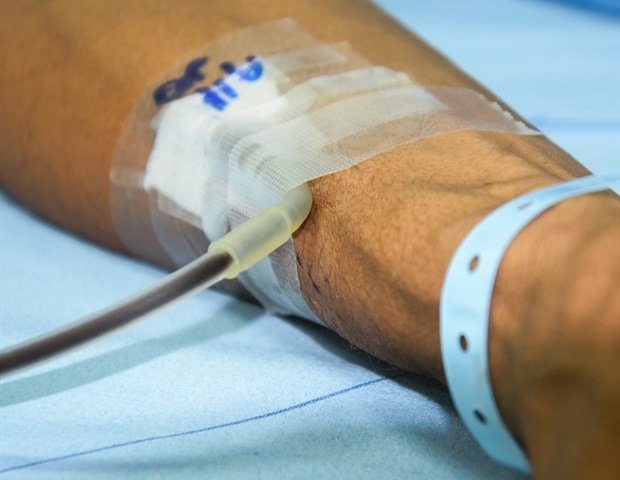
Pink blood cell transfusions (RBCTs) are life-saving remedies for critically unwell sufferers affected by anemia, a situation the place the physique lacks sufficient wholesome pink blood cells to ship oxygen successfully. Whereas efficient in growing oxygen ranges within the blood, transfusions can disrupt blood movement and oxygen distribution, doubtlessly inflicting hurt to important organs just like the mind. To handle this, researchers are exploring new instruments to observe these results extra exactly.
A current examine reported in Biophotonics Discovery investigated a novel expertise known as hybrid diffuse optics (DO), which makes use of near-infrared mild to constantly measure modifications in blood movement and oxygen ranges noninvasively. The purpose was to grasp whether or not this method might improve decision-making and enhance outcomes by offering detailed insights into how oxygen is delivered and utilized within the physique. Not like conventional strategies that present solely systemic information (e.g., blood samples), this expertise affords an in depth have a look at native modifications in particular tissues.
The examine monitored critically unwell sufferers present process RBCTs in an intensive care unit. Optical probes positioned on the sufferers’ foreheads (to measure mind responses) and muscular tissues (to measure peripheral responses) supplied steady information earlier than, throughout, and after transfusions.
After transfusion, oxygen provide elevated considerably in each the mind and muscular tissues. This was confirmed by larger ranges of oxygenated hemoglobin and whole hemoglobin. Oxygen extraction fractions decreased in each the mind and peripheral muscular tissues, indicating that tissues had been higher oxygenated. Whereas the mind maintained secure blood movement, the muscular tissues skilled a major enhance in blood movement after transfusion. This implies that the mind had protecting mechanisms at play to manage oxygen provide. The examine discovered no indicators of dangerous results like over-perfusion (extra blood movement) or under-perfusion within the mind, highlighting the potential security of RBCTs when guided by these superior monitoring strategies.
This analysis demonstrates the potential of hybrid DO as a instrument for optimizing blood transfusions, serving to docs tailor remedies to particular person sufferers, minimizing dangers and bettering outcomes. As an example, docs might use this instrument to verify that the mind is receiving sufficient oxygen with out risking extreme blood movement to different areas, which could trigger swelling or different problems. This examine is a promising step towards integrating superior optical instruments into routine medical care, paving the best way for safer and more practical remedies for critically unwell sufferers.
The insights gained from this examine might result in:
- Personalised drugs. Actual-time monitoring might information extra exact transfusion methods, guaranteeing every affected person will get precisely what they want.
- Improved decision-making. By figuring out which tissues are underneath stress, clinicians could make extra knowledgeable choices about when to intervene.
- Wider adoption of noninvasive instruments. The usage of optical applied sciences might scale back reliance on invasive procedures, making important care safer and extra comfy for sufferers.
Past important care, this expertise might have functions in surgical procedure, neonatal care, neurocritical care, and managing continual circumstances.
Supply:
Journal reference:
Tagliabue, S., et al. (2025) Hybrid diffuse optical appraisal of peripheral and cerebral modifications in critically unwell sufferers receiving pink blood cell transfusion. Biophotonics Discovery. https://doi.org/10.1117/1.BIOS.2.1.015001.
